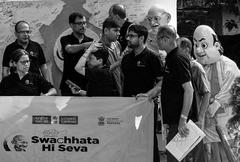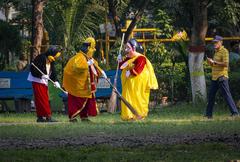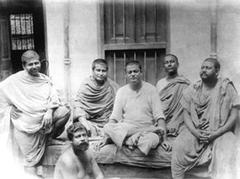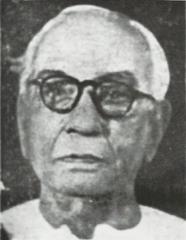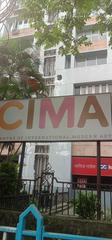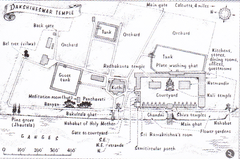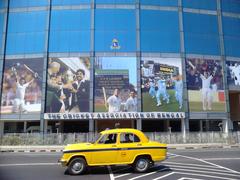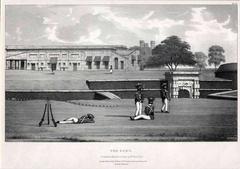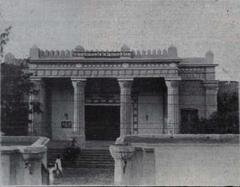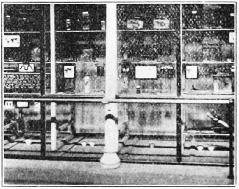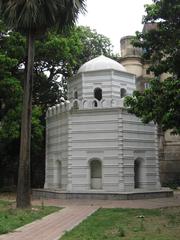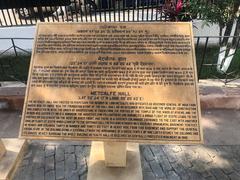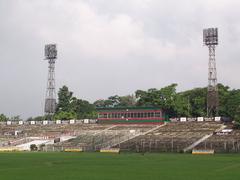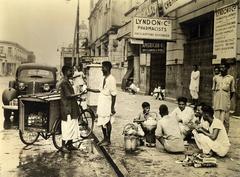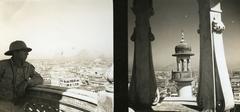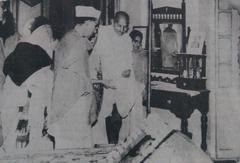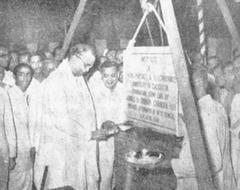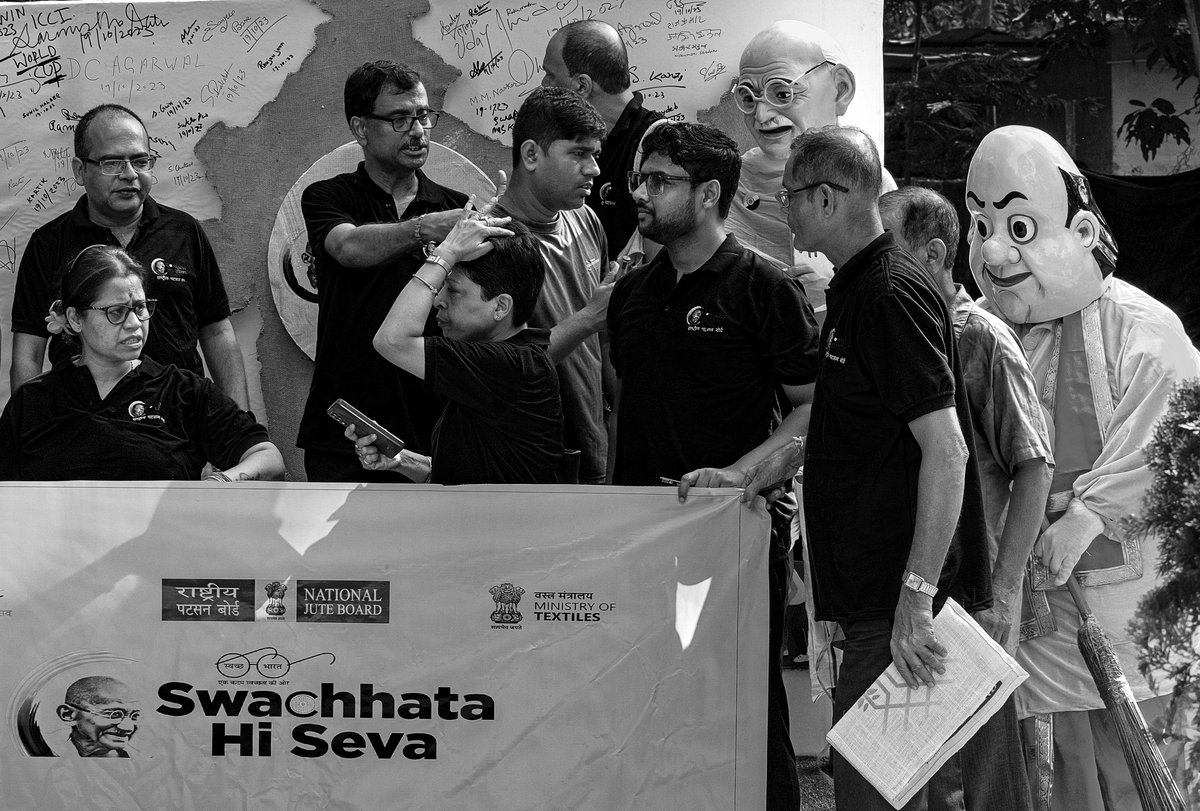
Rabindra Sarobar Visiting Hours, Tickets, and Kolkata Historical Sites – A Comprehensive Guide
Date: 15/06/2025
Introduction
Situated at the heart of South Kolkata, Rabindra Sarobar is a celebrated urban oasis renowned for its tranquil artificial lake, lush greenery, and vibrant cultural scene. Once a marshy expanse, the area was transformed in the early 20th century into a dynamic public space, now spanning over 73 acres of water and 119 acres of landscaped parks. As one of Kolkata’s most beloved landmarks, Rabindra Sarobar offers a harmonious blend of nature, recreation, and heritage—earning it the moniker “the lungs of Kolkata” due to its vital ecological role.
This guide presents essential information for visitors, including Rabindra Sarobar visiting hours, ticket details (entry is free), accessibility, and travel tips. It also explores the site’s rich history, ecological importance, cultural highlights, and nearby attractions, ensuring you have all the tools you need for an enriching visit (Kolkata Tourism, Trip101, Thrillophilia).
Quick Facts and Visitor Essentials
- Location: Dhakuria, South Kolkata
- [Visiting Hours: 5:00 AM – 9:00 PM, daily (Kolkata Tourism)](#visiting-hours:-5:00-am-–-9:00-pm,-daily-(kolkata-tourism))
- Entry Fee: Free; no general tickets required
- Accessibility: Wheelchair-accessible paths, nearby metro station, and public transport connectivity
- Best Visiting Time: Mornings or late afternoons, October to March
- Nearby Attractions: Nazrul Mancha, Japanese Buddhist Temple, Alipore Zoo, Victoria Memorial
Historical Overview
From Marshland to Urban Landmark
Rabindra Sarobar, originally known as Dhakuria Lake, emerged in the 1920s through the efforts of the Calcutta Improvement Trust (CIT), which sought to convert an uninhabitable marsh into a recreational and ecological asset. The transformation, spanning 1921–1929, involved significant land reclamation and the creation of an artificial lake, under the leadership of CIT chairman Cecil Henry Bompass and engineers such as M.R. Atkins and Prabodh Chandra Chatterjee.
Artifacts unearthed during excavation—including cannons from the Battle of Plassey—highlight the site’s layered history. Initially called Bompass Lake, it became widely known as Dhakuria Lake before being renamed Rabindra Sarobar in 1958 to honor Nobel laureate Rabindranath Tagore (Trip101).
Cultural Evolution
Rabindra Sarobar swiftly developed into a cultural hub. Landmarks such as the Nazrul Mancha auditorium and Bengali Rowing Club anchor its role as a gathering place for performances, sports, and festivals—including the annual Rabindra Jayanti celebration. The Japanese Buddhist Temple, established in 1935, and the presence of diverse places of worship reflect the area’s multicultural ethos.
Ecological Significance
Biodiversity Hotspot
Rabindra Sarobar is a vital ecological refuge within the city, supporting over 175 bird species, including migratory visitors from Siberia and Russia during winter (JoysNature). Its mature trees, aquatic habitats, and islands provide sanctuary for birds, butterflies, small mammals, and reptiles.
Environmental Contributions
- Air Quality: Dense tree cover assists in air purification and carbon sequestration
- Microclimate: Regulates temperature and mitigates urban heat
- Water Management: Contributes to groundwater recharge
- Recreation: 65% of the area is open to public use
Conservation Efforts
Recognizing its ecological value, Rabindra Sarobar was declared a “National Lake” in 1997 under the National Lake Conservation Programme. Ongoing challenges include pollution, littering, and urban encroachment, addressed through government and community initiatives such as cleaning drives, plantation programs, and environmental awareness campaigns (World Landscape Architect).
Things to Do at Rabindra Sarobar
- Morning and Evening Walks: Enjoy shaded, scenic paths around the lake
- Birdwatching: Spot kingfishers, herons, migratory waterfowl, and other avian species
- Boating and Rowing: Join local clubs or rent pedal boats and kayaks (UrTrips)
- Cultural Events: Attend performances and festivals at Nazrul Mancha and Mukta Mancha (Trodly)
- Photography: Capture stunning sunrise/sunset views and wildlife
- Meditation and Yoga: Utilize calm garden spaces for relaxation
- Children’s Play Areas: Family-friendly parks and playgrounds available
Visitor Facilities and Amenities
- Restrooms: Available at select entrances; cleanliness varies
- Seating: Benches and shaded spots throughout the park
- Food & Drink: Tea stalls, snack vendors, and nearby cafes in Dhakuria and Southern Avenue (UrTrips)
- Parking: Limited; public transport recommended
- Accessibility: Ramps and paved pathways for differently-abled visitors
Accessibility and Getting There
- By Metro: Rabindra Sarobar Metro Station (Line 1) adjacent to the lake
- By Bus/Auto: Multiple routes serve the area; taxis and app-based cabs available
- By Air: Netaji Subhash Chandra Bose International Airport is approximately 23.5 km away
- By Train: Well-connected from Howrah and Sealdah stations
- Parking: Limited near main entrances; metro or bus recommended during weekends
Notable Attractions Within and Around Rabindra Sarobar
- Nazrul Mancha: Major auditorium for music and theater (Kolkata Tourism)
- Mukta Mancha: Open-air theater for community events
- Japanese Buddhist Temple: Serene prayer hall and meditation space (Trodly)
- Museum of Durga Idols: Showcases award-winning idols from Durga Puja (Trawell.in)
- Rabindra Sarobar Stadium: Historic football venue
- Nearby Sites: Victoria Memorial, Alipore Zoo, Kalighat Kali Temple, Birla Temple, Marble Palace, Agri Horticultural Garden
Best Time to Visit & Seasonal Highlights
- October–March: Pleasant weather, ideal for walks and birdwatching (Travel Setu)
- Monsoon: Lush greenery, increased bird activity; prepare for rain
- Event Seasons: Check for rowing competitions, open-air festivals, and cultural programs during local holidays
Safety and Visitor Guidelines
- Leave before dark due to limited lighting in some areas
- Follow posted rules: no littering, fishing, or swimming outside designated areas
- Leash pets and clean up after them
- Respect religious and cultural sites
- Carry water, sunscreen, and insect repellent
Frequently Asked Questions (FAQ)
Q: What are Rabindra Sarobar’s visiting hours?
A: 5:00 AM – 9:00 PM daily (Kolkata Tourism).
Q: Is there an entry fee or ticket required?
A: No, entry is free for all visitors.
Q: How do I get there?
A: Via Rabindra Sarobar Metro Station, bus, auto-rickshaw, or taxi.
Q: Is Rabindra Sarobar wheelchair accessible?
A: Main paths are accessible; some areas may be uneven.
Q: Are pets allowed?
A: Yes, but they must be leashed.
Q: Is boating available?
A: Yes, with tickets for pedal boats, kayaks, and club activities.
Q: Are guided tours offered?
A: Local nature clubs occasionally organize nature walks and birdwatching tours.
Visuals and Media
- Panoramic sunrise over Rabindra Sarobar lake (alt: Rabindra Sarobar lake sunrise view)
- Visitors strolling along tree-lined paths (alt: Visitors strolling at Rabindra Sarobar park Kolkata)
- Cultural event at Nazrul Mancha (alt: Cultural performance at Nazrul Mancha Kolkata)
- Japanese Buddhist Temple (alt: Japanese Buddhist Temple at Rabindra Sarobar)
Environmental and Community Engagement
- Participate in community clean-up drives
- Avoid single-use plastics and do not feed wildlife
- Support local conservation efforts
Emergency Contacts
- Police: Lake Police Station nearby
- Hospitals: AMRI Hospital, Fortis Hospital (within 2–3 km)
Summary
Rabindra Sarobar exemplifies the seamless integration of nature, culture, and history within Kolkata’s urban fabric. As a free, accessible destination, it welcomes everyone—from morning joggers and birdwatchers to families and culture enthusiasts. Its ecological significance, storied past, and ongoing community engagement make it a living symbol of the city’s heritage and environmental consciousness.
For current information on visiting hours, events, and facilities, consult the Kolkata Tourism website or download the Audiala app for real-time updates. Plan your visit to experience one of Kolkata’s most iconic and rejuvenating spaces.
Call to Action
Download the Audiala app for updates on Rabindra Sarobar visiting hours, events, and guided tours. Connect with us on social media for tips, photo features, and news about Kolkata’s historical sites. Make Rabindra Sarobar your next cultural and nature getaway.
Sources
- Rabindra Sarobar: Visiting Hours, Tickets, History & Things to Do in Kolkata, 2025, Trip101
- Rabindra Sarobar Kolkata: Visiting Hours, Tickets, and Cultural Significance, 2025, World Landscape Architect
- Rabindra Sarobar: Visiting Hours, Tickets, and Things to Do at Kolkata’s Historic Urban Oasis, 2025, Thrillophilia
- Rabindra Sarobar Visiting Hours, Entry Fees, and Guide to Kolkata’s Famous Historical Lake, 2025, Kolkata Tourism
- Rabindra Sarobar Lake - The Real Biodiversity Hotspot in South Kolkata, 2025, JoysNature
- Rabindra Sarobar: Visiting Hours, Tickets, and Things to Do, 2025, UrTrips
- Rabindra Sarobar: Visiting Hours, Tickets, and Things to Do at Kolkata’s Historic Urban Oasis, 2025, Trawell.in
- Rabindra Sarobar: Visiting Hours, Tickets, and Things to Do at Kolkata’s Historic Urban Oasis, 2025, Trodly
- Rabindra Sarobar: Visiting Hours, Entry Fees, and Guide to Kolkata’s Famous Historical Lake, 2025, Travel Setu
- World News of Natural Sciences, 2025 (PDF)
- Tour Yatras: Rabindra Sarobar Lake Timing
